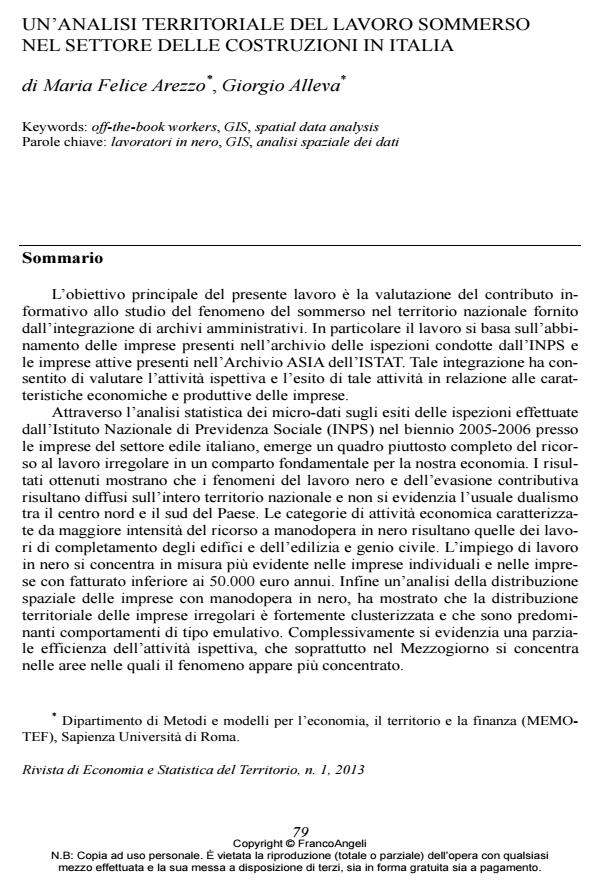A territorial analysis of irregular labor in italian building industry
Journal title RIVISTA DI ECONOMIA E STATISTICA DEL TERRITORIO
Author/s Maria Felice Arezzo, Giorgio Alleva
Publishing Year 2013 Issue 2013/1
Language Italian Pages 32 P. 79-110 File size 1111 KB
DOI 10.3280/REST2013-001004
DOI is like a bar code for intellectual property: to have more infomation
click here
Below, you can see the article first page
If you want to buy this article in PDF format, you can do it, following the instructions to buy download credits

FrancoAngeli is member of Publishers International Linking Association, Inc (PILA), a not-for-profit association which run the CrossRef service enabling links to and from online scholarly content.
The main objective of our paper is the evaluation of the contribution given by the integration of a plurality of administrative dataset to the comprehension of irregular work. This integration allowed for the evaluation of the inspection activity. Methods and Results Our paper presents results from exploratory data analysis on submerged labour and inspection activity in Italian construction sector, based on inspections results of National Social Security Institute (INPS) during 2005-2006 and represent it with geographical maps. The building industry is traditionally characterized by a high lever of irregular work and our study underline the added value to territorial studies brought by an integrated use of databases having different sources. The main results, some of which unexpected, show that regarding off-the-book workers there is not the usual north-south duality. The highest concentration of irregularities is for individual firms and for firms with a turnover lower than 50.000 € per year. Spatial analysis showed that irregular firms tend to cluster together and therefore an emulative- type pattern emerge from our analysis. Conclusions The use of administrative data and its integration with other source of information has allowed to highlight some behaviour related to the use of undeclared workers in Italian building and construction firms. Data integration is a challenging task both because data owners are not necessary willing to share them and because there are some non negligible technical difficulties. Nevertheless it is undoubtedly an approach which advantages are far greater than the drawbacks.
Keywords: Off-the-book workers, GIS, spatial data analysis
Jel codes: O17, C21, O18, R32
Maria Felice Arezzo, Giorgio Alleva, Un’analisi territoriale del lavoro sommerso nel settore delle costruzioni in Italia in "RIVISTA DI ECONOMIA E STATISTICA DEL TERRITORIO" 1/2013, pp 79-110, DOI: 10.3280/REST2013-001004